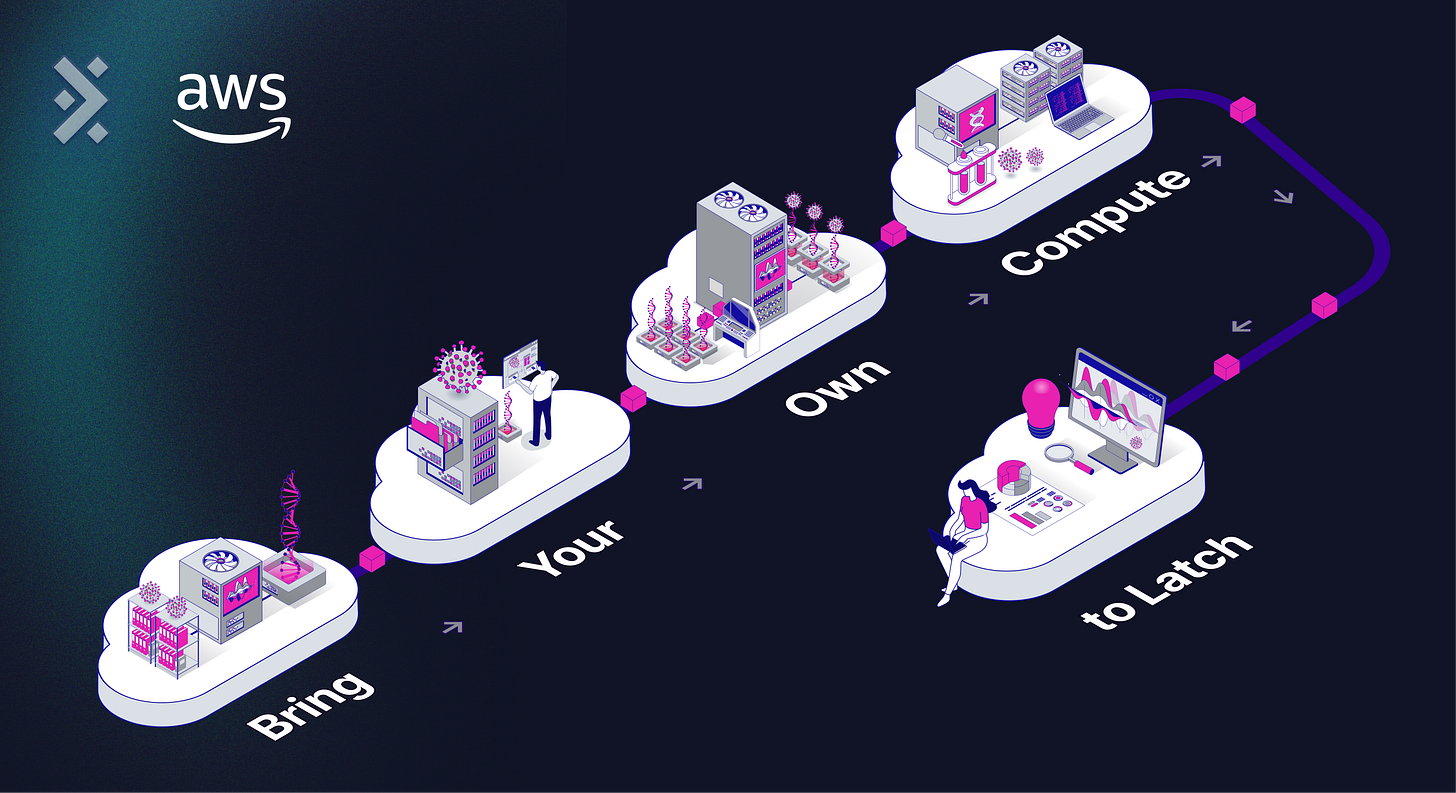Bring-your-own-compute to Latch Pods
Latch Pods can now run on your own AWS.
Since launching in 2022, pods became our fastest growing product. Now, you can run pods in your AWS account.
What is a latch pod?
Latch pods are scientific computing environments built for biology. Pods let you run biological data science and machine learning applications in one place.
A central system for JupyterLab, RStudio, and VSCode environments.
A common set of tools for intuitive sharing of R and Python code.
Collaborative notebooks for single-cell, spatial, image viewing, and more.
Flexible control over CPUs, memory, and GPUs for different projects and users.
Cloud billing features to monitor spending and set daily limits.
What is bring-your-own-compute?
Bring-your-own-compute is a new Latch architecture that allows you to:
Connect your AWS environment
Leverage your existing compute
Specify geographic regions
Use your cloud credits
All without data or compute leaving your servers.
How does it work?
High-level architecture
Bring-your-own-compute is part of a new latch architecture, which operates with a control plane and compute plane.
The control plane includes services that Latch manages in your account.
(e.g. Latch pods.)The compute plane is where your data is processed. There are two types of compute:
Latch Managed compute, which runs in your Latch account.
Bring-your-own compute, which runs in your AWS account.
Each Latch workspace has a storage bucket, which is in your AWS account.
Motivation and roadmap
We built this to deliver several benefits to our customers:
Ensure that data never leaves your cloud tenancy.
Allow you to use existing cloud provider credits.
Reduce network latency for users geographically far from us-west-2
Increase GPU availability by allowing compute hosts from other AWS regions
Improve cost efficiency by exposing a more diverse set of compute options
Based on interest, we’ll plan to continue supporting bring-your-own compute for the entire platform, including workflows, nextflow, and plots. Long-term, we’ll move towards support for GCP, Azure, and more compute providers.
How do I get started?
To get started, please comment or send a note to kyle@latch.bio and we’ll send you instructions. Thanks for reading.





Love this!